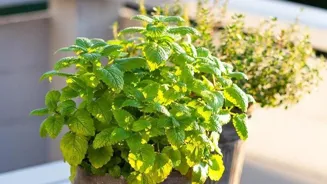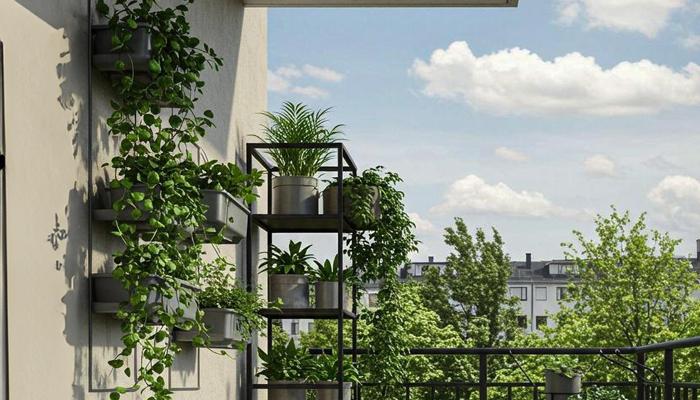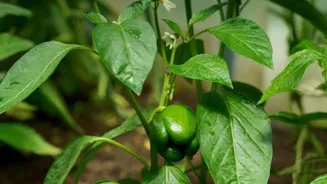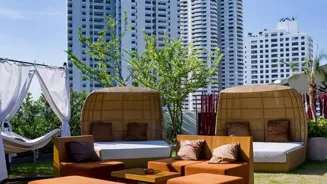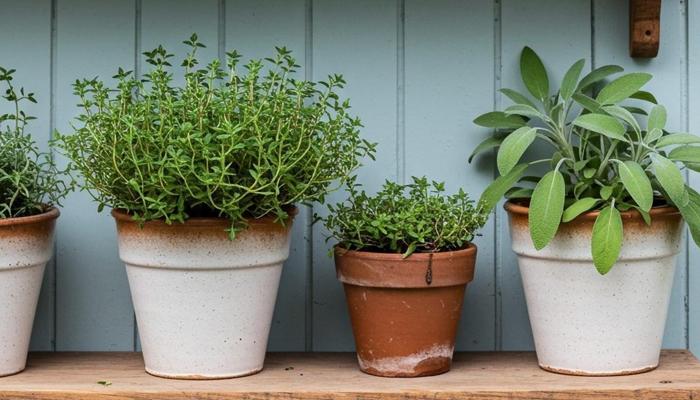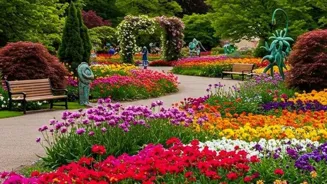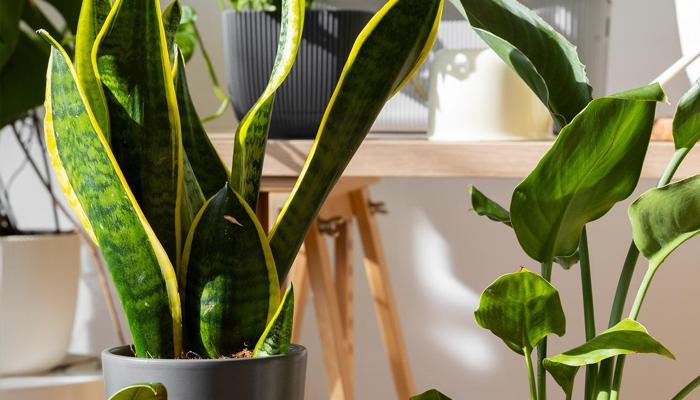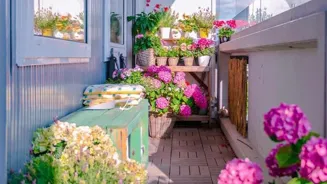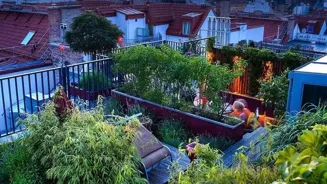Discover the secrets to thriving terrace gardening in urban spaces! Learn how to unleash your green thumb and create a flourishing oasis with these 6 expert tips. From understanding sunlight and soil to selecting
the right plants and containers, this guide will help you transform your terrace into a vibrant green haven. Read on to unlock the potential of your urban garden!
In the concrete jungles of our Indian cities, a touch of green can be a welcome respite. Terrace gardening is booming, offering a chance to connect with nature, grow your own organic produce, and add a splash of colour to your urban dwelling.

But getting started, and more importantly, succeeding, requires a bit of planning and knowledge. Fear not! Here are six tips to help you unlock your inner gardener and create a flourishing terrace oasis.
Sun's Out, Greens Out: Understanding Sunlight & Location
Before you even think about seeds and soil, observe the sunlight your terrace receives. Different plants have different light requirements. Some crave full sun (6-8 hours), while others thrive in partial shade (3-6 hours) or even dappled sunlight. This initial assessment is most important.
If your garden doesn't receive sufficent sunlight it might affect yeild of plants. Understanding this will help in making good choices.
Consider the direction your terrace faces. South-facing terraces generally receive the most sunlight, while north-facing ones get the least.
East-facing terraces get morning sun which is gentle, and west-facing terraces receive harsh afternoon sun. So, do your homework. Plant placement is not so difficult. It will help in the longevity and life of the plants.
Once you have a grasp of the amount of sunlight reaching various spots on your terrace, you can plan where each plant will be located. Group plants with similar light needs together to make watering and maintenance easier.
You can also use shade netting to provide extra protection during peak summer months.
Soil Matters: Choosing the Right Growing Medium
The foundation of any successful garden is the soil. Avoid using regular garden soil on your terrace, as it can be too heavy and compacted, hindering drainage. Instead, opt for a lightweight, well-draining potting mix specifically designed for container gardening.
This will ensure that your plants' roots receive the necessary air and nutrients. You can also create your own potting mix by combining equal parts of cocopeat, vermicompost, and perlite or sand.
Consider the specific needs of the plants you plan to grow.
Some plants prefer acidic soil, and some like alkaline. You can easily amend your potting mix to suit their requirements. Check the pH level regularly using a soil testing kit and adjust as needed. Good soil will help yield healthy plants and improve productivity.
Regularly replenishing your potting mix with compost or vermicompost will provide a continuous supply of nutrients. This ensures that your plants receive the necessary nourishment. Remember, healthy soil equals healthy plants! So, give extra effort in maintaining the soil.
Water Wise: Irrigation Techniques for Urban Gardens
Water is life, especially for your leafy friends! But overwatering or underwatering can be detrimental. Check if the plants are dry and need water by touching the soil. A good drainage system is essential to prevent waterlogging. Water logging is detrimental for plants.
They prevent the plants from breathing and absorbing nutrients from the soil.
Water plants in the early morning or late evening to minimize water loss through evaporation. Avoid watering during the hottest part of the day. Also, consider water conservation methods like drip irrigation.
This delivers water directly to the roots, minimizing wastage This method works best for people who have a large container garden setup
Rainwater harvesting can be used to collect and store rainwater for watering your plants during dry periods. This is an eco-friendly and cost-effective solution.
Remember, a little planning goes a long way in conserving water.
Container Considerations: Selecting the Right Pots
Choosing the right containers is essential for successful terrace gardening. Consider the size, material, and drainage of the pots. Different plants have different root systems and growth habits, so select containers that are appropriately sized.
Small, shallow pots may be suitable for herbs, but larger plants like tomatoes or fruit trees will require spacious containers.
Terracotta pots are porous and allow for good air circulation, but they can dry out quickly.
Plastic pots are lightweight and retain moisture well, but they can overheat in direct sunlight. You can also repurpose old containers like buckets, barrels, or even tires, but make sure they have drainage holes. These recycled containers add a unique charm to terrace garden.
Regardless of the material, make sure the pots have adequate drainage holes to prevent waterlogging. Add a layer of gravel or pebbles at the bottom to improve drainage. This is especially important for clayey soil, which tends to retain too much water.
Also, arrange pots to ensure sunlight reaches all plants.
Pest Patrol: Natural Ways to Keep Critters at Bay
Pests can wreak havoc on your terrace garden. But you can avoid harsh chemicals and use natural methods. Regularly inspect plants for signs of infestation. Early detection is key to controlling pests before they cause serious damage. Look for insects, eggs, or unusual leaf damage.
Neem oil is a natural insecticide and fungicide that can be used to control a wide range of pests. Spray neem oil solution on your plants regularly to prevent infestations. Attract beneficial insects like ladybugs and lacewings to your garden. They eat pests.
Plant flowers that attract them, like marigolds, sunflowers, and lavender.
Organic pest control methods like companion planting and crop rotation can help keep pests at bay. Companion planting involves planting certain vegetables that mutually benefit one another.
If infestation is immense you can try organic pest control sprays easily available in stores. This method keeps your terrace garden healthy and robust.
****6. Grow Your Own Groceries: Selecting Plants for Your Terrace
One of the joys of terrace gardening is growing your own food.
Choose plants that are well-suited to your climate and the amount of sunlight your terrace receives. Vegetables like tomatoes, peppers, eggplants, and leafy greens are popular choices for urban gardens. Herbs like basil, mint, coriander, and rosemary can be grown in pots or hanging baskets.
They are easy to grow and use in your everyday cooking.
Consider the space requirements of each plant. Some plants, like tomatoes and cucumbers, require staking or trellising to support their growth. Vertical gardening is a great way to maximize space on a small terrace.
You can grow herbs, vegetables, or flowers on trellises.
Growing fruits and vegetables on your terrace can be a rewarding experience. From the satisfaction of harvesting tomatoes grown in your own garden to the pure taste of the fresh herbs that have been plucked.
This enhances food with flavors and is a rewarding process.
AI Generated Content. Glance/InMobi shall have no liability for the content